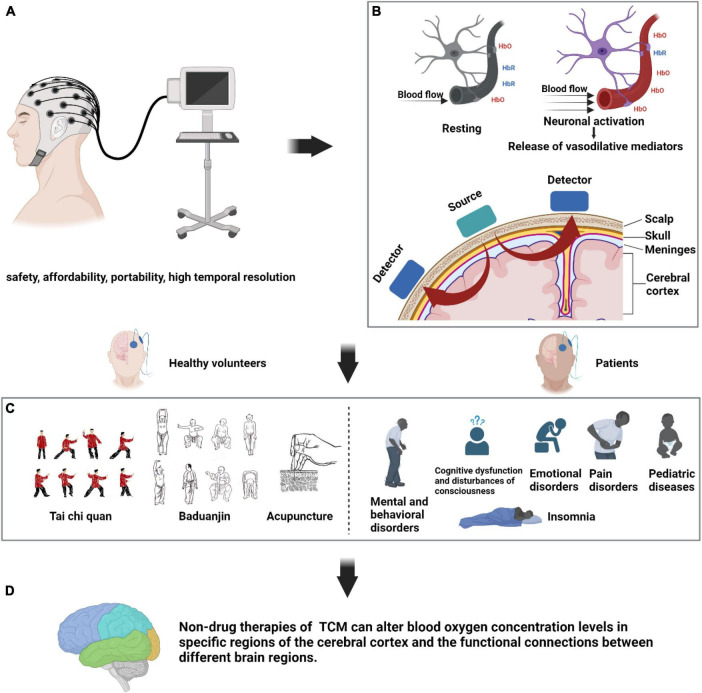- Record: found
- Abstract: found
- Article: found
Applications of functional near-infrared spectroscopy in non-drug therapy of traditional Chinese medicine: a review

Read this article at
Abstract
Non-drug therapies of traditional Chinese medicine (TCM), including acupuncture, massage, tai chi chuan, and Baduanjin, have emerged as widespread interventions for the treatment of various diseases in clinical practice. In recent years, preliminary studies on the mechanisms of non-drug therapies of TCM have been mostly based on functional near-infrared spectroscopy (fNIRS) technology. FNIRS is an innovative, non-invasive tool to monitor hemodynamic changes in the cerebral cortex. Our review included clinical research conducted over the last 10 years, establishing fNIRS as a reliable and stable neuroimaging technique. This review explores new applications of this technology in the field of neuroscience. First, we summarize the working principles of fNIRS. We then present preventive research on the use of fNIRS in healthy individuals and therapeutic research on patients undergoing non-drug therapies of TCM. Finally, we emphasize the potential for encouraging future advancements in fNIRS studies to establish a theoretical framework for research in related fields.
Graphical Abstract

Related collections
Most cited references87
- Record: found
- Abstract: found
- Article: not found
Parkinson disease
- Record: found
- Abstract: found
- Article: not found
A brief review on the history of human functional near-infrared spectroscopy (fNIRS) development and fields of application.

- Record: found
- Abstract: found
- Article: found